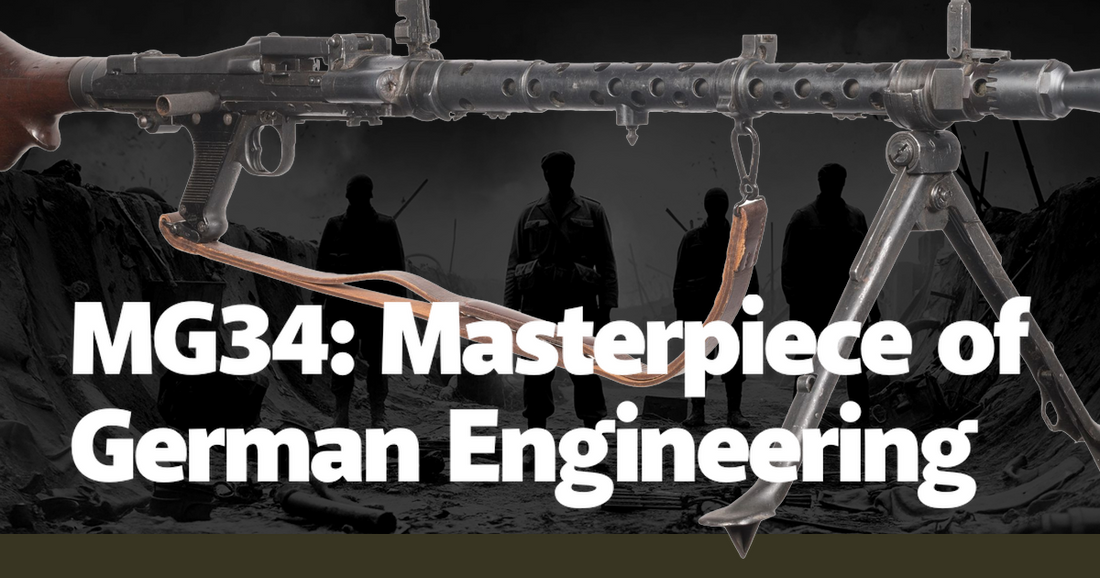The MG34, often heralded as a masterpiece of German engineering, stands as a testament to the ingenuity and precision of mid-20th century weapon design. Developed in the early 1930s by the Mauser company, the MG34 was revolutionary in its concept and execution. It was the first truly successful general-purpose machine gun (GPMG), capable of fulfilling multiple roles on the battlefield. The weapon's design allowed it to be used as a light machine gun (LMG) when mounted on a bipod, a medium machine gun (MMG) when placed on a tripod, or even an anti-aircraft weapon when equipped with the appropriate mount. This versatility was unprecedented and provided the German Wehrmacht with a significant tactical advantage during World War II.
One of the most striking features of the MG34 was its rate of fire, which could reach up to 900 rounds per minute. This was achieved through a combination of advanced engineering techniques and high-quality materials. The weapon's recoil-operated, air-cooled system allowed for sustained fire, a critical factor in both offensive and defensive operations. The MG34's barrel could be quickly changed to prevent overheating, a feature that was both innovative and practical. This quick-change barrel system was a lifesaver in prolonged engagements, where the ability to maintain a continuous rate of fire could mean the difference between victory and defeat.
The MG34's precision engineering extended to its construction. Made primarily from machined steel, the weapon was both robust and reliable. The craftsmanship involved in its production was of such high quality that it set a new standard for military firearms. Soldiers who used the MG34 often remarked on its reliability and ease of maintenance, even in the harshest conditions. Anecdotes from the Eastern Front, where temperatures could plummet to extreme lows, highlight the weapon's resilience. Despite the freezing conditions, the MG34 continued to function when other weapons failed, earning it the respect and admiration of those who wielded it.
The MG34 was not just a tool of war; it was a symbol of German military prowess. Its design influenced countless other firearms, both during and after the war. The weapon's impact on military tactics was profound. The ability to lay down a high volume of suppressive fire allowed German infantry units to maneuver more effectively, coordinating assaults with an efficiency that often caught their adversaries off guard. The MG34's effectiveness was so pronounced that it became a primary target for Allied forces, who recognized the threat it posed on the battlefield.
Despite its many advantages, the MG34 was not without its drawbacks. The complexity of its design made it expensive and time-consuming to produce. As the war dragged on and resources became scarcer, the German military sought a more cost-effective solution. This led to the development of the MG42, a simpler and cheaper alternative that retained many of the MG34's best features while improving upon its rate of fire and ease of manufacture. However, the MG34 continued to see widespread use throughout the war, a testament to its enduring effectiveness.
The legacy of the MG34 extends beyond its use in World War II. Post-war, the weapon found its way into the arsenals of various countries around the world. Its design principles influenced a new generation of machine guns, cementing its place in the annals of military history. The MG34's influence can be seen in modern firearms that prioritize versatility, reliability, and high rates of fire. Its role in shaping the development of military technology cannot be overstated.
In the realm of military history, the MG34 stands out not just for its technical specifications, but for the impact it had on those who used it and those who faced it. Veterans' accounts often speak to the psychological effect of the MG34's distinctive sound, a rapid staccato that could instill both confidence in its operators and fear in its enemies. The weapon's presence on the battlefield was a constant reminder of the technological edge that German engineering provided.
In conclusion, the MG34 was more than just a machine gun; it was a groundbreaking innovation that changed the face of warfare. Its design, versatility, and reliability set new standards in military engineering, influencing the development of future firearms and tactics. The MG34's legacy is a testament to the ingenuity and craftsmanship of its creators, and it remains a symbol of the technological advancements that defined the era. Whether in the hands of a German soldier on the Eastern Front or a modern-day historian examining its impact, the MG34 continues to be recognized as a masterpiece of German engineering.

